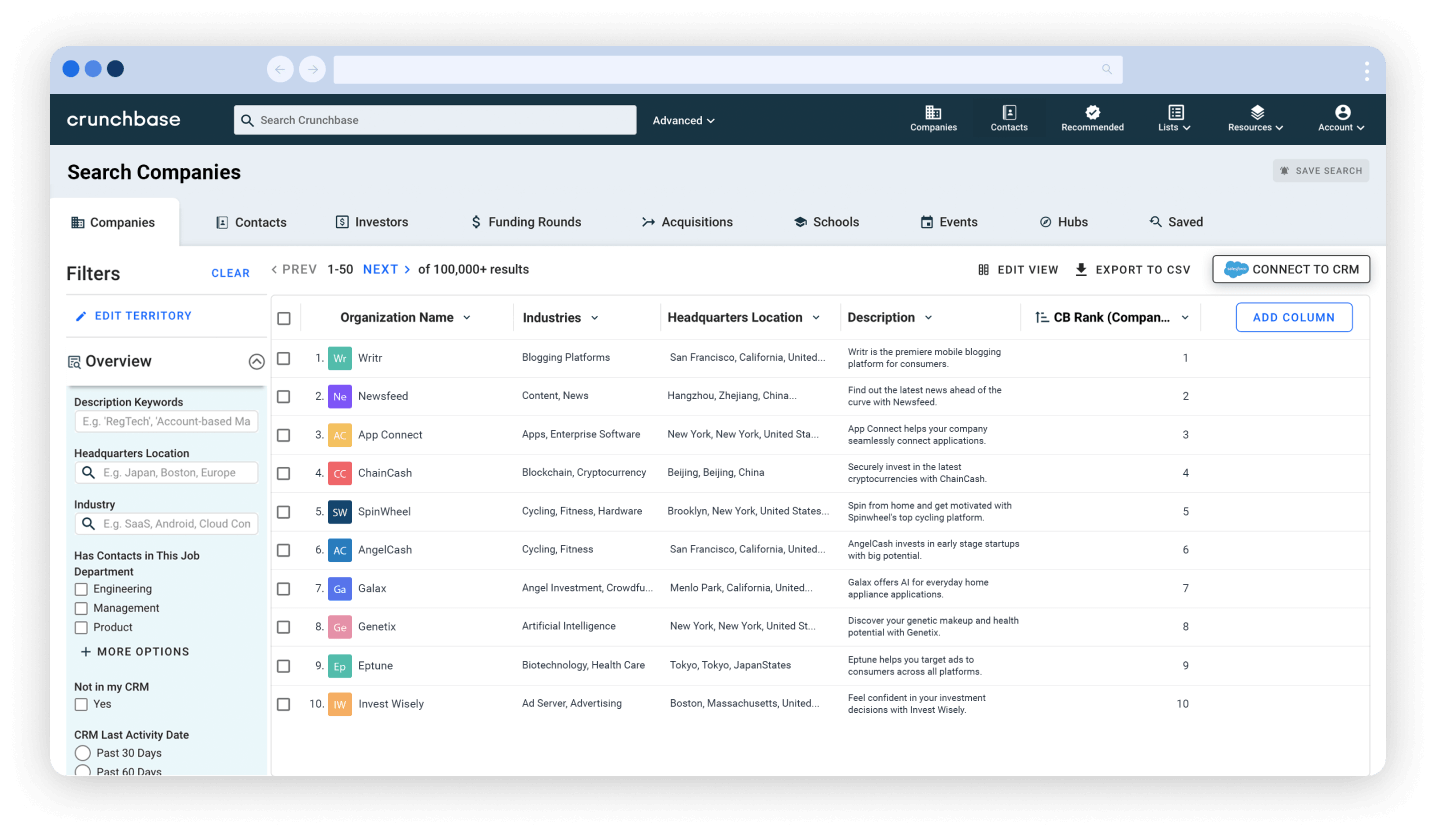In 2017, we had a death in the portfolio. Once all the employees left, the only remaining assets were some patents, servers, domains, and a lot of code. Recently, we managed to learn how to sell a patent and code. Here’s a look at what we learned.
How to sell a patent in 7 steps
1. Set expectations when selling patents
The value of IP is a small fraction (maybe 1-5 cents on the dollar) of what the company was once valued at. The sale of an IP is unlikely to be an all-cash deal — don’t be surprised if the final consideration is a blend of cash, stock, royalty, earn out, or another creative structure that reduces the buyer’s upfront risk.
Find your next investor and upgrade to Crunchbase Pro.
Selling a patent takes a year or more, with legal taking up 6 to 9 months alone. We recommend using lawyers who specialize in mergers and acquisitions, and have experience in bankruptcy and winding down entities.


You’ll need to prepare to pay for legal, preparing the code, and other unforeseen expenses that need to get paid ahead of close. It’s important to figure out what you’ll recover, what the probability of success is, and if you want to sell the IP.
2. Reach out to everyone you know
If you’ve decided it’s worth selling your IP, reach out to absolutely everyone you know. This could include:
- Previous customers
- Prospects,
- Anyone who solicited you for acquisition
- Family
- Friends
Don’t overlook anyone as a potential buyers since you don’t know what’s on someone’s product roadmap. Be shameless about reaching out to your entire network. The person who acquired our IP was a prospect who never became a customer. We also had interest from firms that weren’t remotely adjacent to our space.
3. Get the CTO involved
In order to transfer code to an acquirer, you’ll need assistance from the CTO or the person who built the code. No acquirer will take the code as-is, unless you’re willing to massively discount the price to hedge their risk.
They buyer will want it cleaned up and packaged specifically to their needs. In our case, it took a founding developer 3 months of hard work to package the code just right. And we gladly paid the developer well for successful delivery.
4. Hire great counsel
The code was once part of a company, and that company has liabilities, creditors, equity owners, former employees, and various obligations. Everyone is likely disappointed that things didn’t work out. Before you start the process to sell the IP, consult with an attorney who can account for:
- Everyone who has a right to proceeds
- Waterfall of recipients
- Anyone who could potentially block a deal
- Anyone you need approval from
- Whether or not patents are in good standing
You’ll need to pay the attorney up front and as you progress through the deal — itakes take money to make money when selling an IP.
5. Use GitHub
Put the code on GitHub. Have potential acquirers sign a very tight and punitive NDA before allowing them to see the code. You could also give acquirers access to only portions of the code. Github is the best $7 a month you’ll spend when it comes to selling IP.
6. Have assets ready
Even if they can’t use it, an acquirer will want access to all assets. Assets include:
- All code
- Training modules
- Patents
- Domains
- Servers and hardware
- Trademarks, logos, etc.
7. Find a fair and reputable buyer
An acquirer should negotiate fairly and in good faith. Our acquirer had an upstanding and reputable CEO. If you don’t trust the acquirer or if they’re setting off alarm bells, move on.
We were lucky to find an acquirer who was honest, forthright and kept his word. You’ll need to do the same.
Be prepared when selling a patent
Selling patents is incredibly challenging. In our case, the recovery was very small relative to capital invested. The process took almost a year, and there were a lot of people involved to make it happen. We spent tens of thousands of dollars in legal fees, data scientist consulting, patent reinstatement and recovery, shipping of servers, and more.
A lot of that expenditure was done along the way, so we put more money at risk for the possibility of recovering cash in the sale of IP. Learning how to sell a patent wasn’t easy, but we did it. Hopefully, we never have to do it again and neither do you.
Sammy is a co-founder of Blossom Street Ventures. We invest in companies with run rate revenue of $2mm+ and year over year growth of 50%+. We lead or follow in $1mm to $5mm growth rounds and can do inside rounds, secondaries, restructurings and special situations. We’ve made 16 investments all over the US in SaaS, e-commerce, marketplaces, and low-tech. We can commit in 3 weeks and our check is $1mm. Email Sammy directly at sammy@blossomstreetventures.com.






